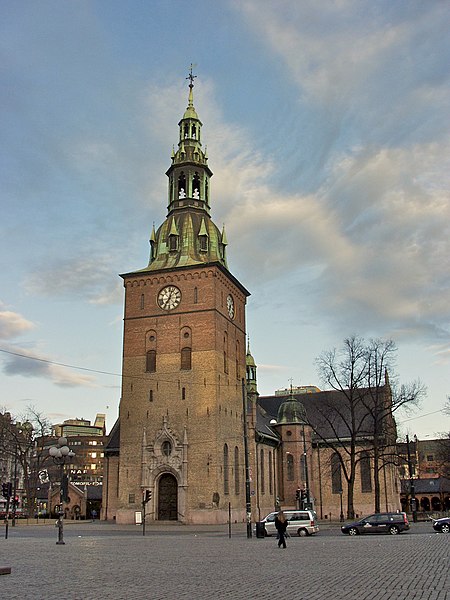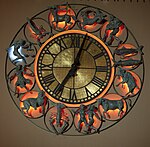The 2011 Norway attacks, referred to in Norway as 22 July (Norwegian: 22. juli) or as 22/7, were two domestic terrorist attacks by neo-Nazi Anders Behring Breivik against the government, the civilian population, and a Workers' Youth League (AUF) summer camp, in which 77 people were killed.
The first attack was a car bomb explosion in Oslo within Regjeringskvartalet, the executive government quarter of Norway, at 15:25:22 (CEST). The bomb was placed inside a van next to the tower block housing the office of the then Prime Minister Jens Stoltenberg. The explosion killed eight people and injured at least 209 people, twelve severely.The second attack occurred less than two hours later at a summer camp on the island of Utøya in Tyrifjorden, Viken (former Buskerud). The camp was organised by the AUF, the youth wing of the ruling Norwegian Labour Party (AP). Breivik, dressed in a homemade police uniform and showing false identification, took a ferry to the island and opened fire at the participants, killing 67 and injuring 32. Among the dead were friends of Stoltenberg, and the stepbrother of Norway's crown princess Mette-Marit. The Utøya attack is the deadliest mass shooting by a lone individual in modern history.
The attack was the deadliest in Norway since World War II. A survey found that one in four Norwegians knew someone affected. The European Union, NATO and several countries expressed their support for Norway and condemned the attacks. The 2012 Gjørv Report concluded that Norway's police could have prevented the bombing and caught Breivik faster at Utøya, and that measures to prevent further attacks and "mitigate adverse effects" should have been implemented.The Norwegian Police arrested Breivik, a 32-year-old Norwegian right-wing extremist, on Utøya island and charged him with both attacks. His trial took place between 16 April and 22 June 2012 in Oslo District Court, where Breivik admitted carrying out the attacks, but denied criminal guilt and claimed the defence of necessity (jus necessitatis). On 24 August, Breivik was convicted as charged and sentenced to 21 years of preventive detention in prison, the maximum sentence allowed in Norway.







